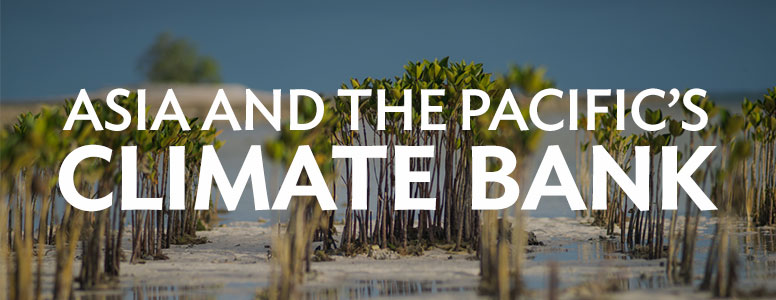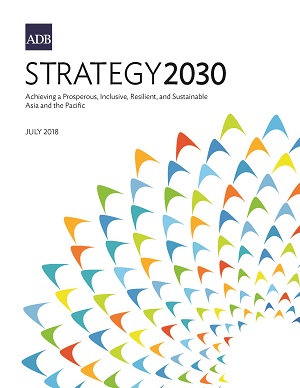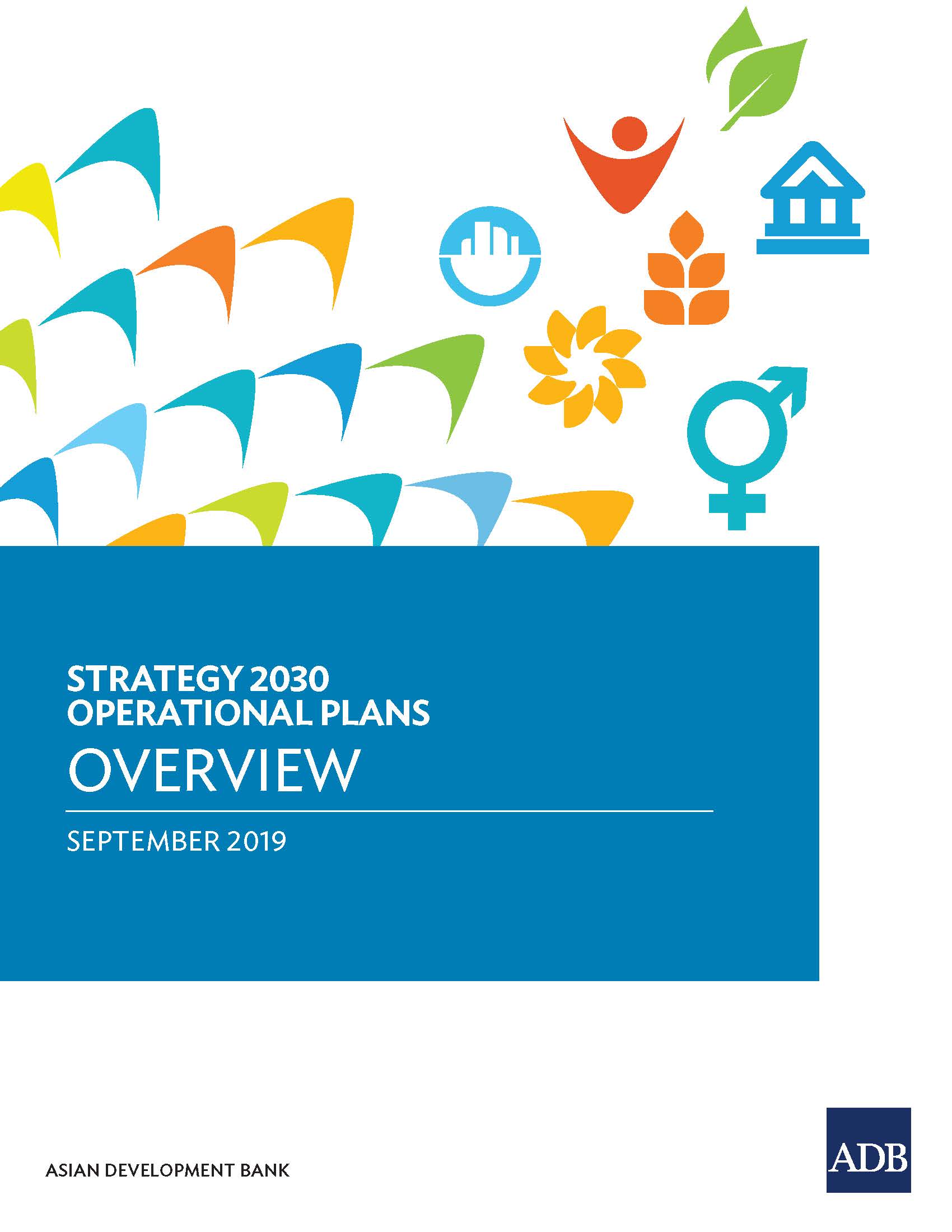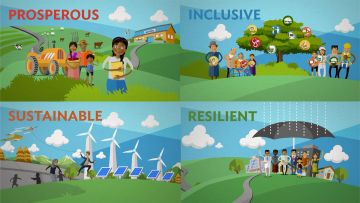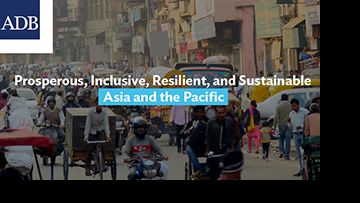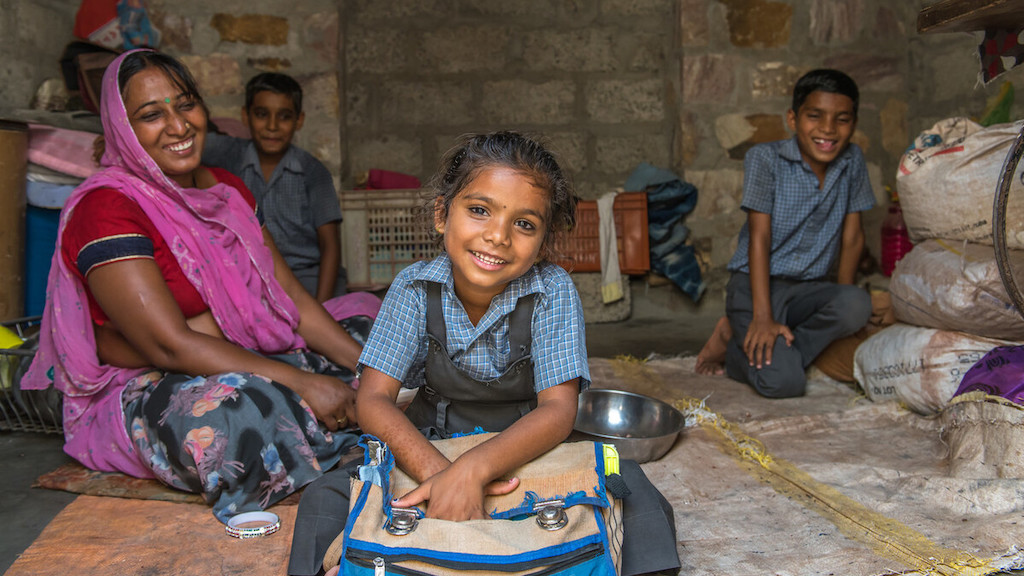Who We Are
ADB is committed to achieving a prosperous, inclusive, resilient, and sustainable Asia and the Pacific, while sustaining its efforts to eradicate extreme poverty. Established in 1966, it is owned by 68 members—49 from the region.
Strategy 2030: Responding to a Changing Asia and the Pacific
Strategy 2030: Achieving a Prosperous, Inclusive, Resilient, and Sustainable Asia and the Pacific
Strategy 2030 sets the course for ADB’s efforts to respond effectively to the Asia and Pacific region’s changing needs.
Strategy 2030 Operational Plans Overview
Strategy 2030 sets out what ADB should do, and why, and it establishes seven operational priorities. Operational Plans have been prepared for each of the seven operational priorities.
ADB's Strategy 2030: Responding to a Changing Asia and the Pacific
Building on 50 years of strong development partnerships, ADB will sustain its efforts to eradicate extreme poverty and continue to work for an Asia and the Pacific that is prosperous, inclusive, resilient, and sustainable.
Building a Prosperous, Inclusive, Resilient, and Sustainable Asia and the Pacific
ADB is forging even stronger links with its members, donors and development partners to build a prosperous, inclusive, resilient, and sustainable Asia and the Pacific.
Operational Priorities
Strategy 2030 sets seven operational priorities, each having its own operational plan. The operational plans contribute to ADB’s vision to achieve prosperity, inclusion, resilience, and sustainability, and are closely aligned with Strategy 2030 principles and approaches.
See the overview document for a summary of the expected activities, outcomes, and new opportunities in the operational plans.
Addressing remaining poverty and reducing inequalities
Supports the Sustainable Development Goal agenda to tackle poverty and inequality and leave no one behind.
Strategic Operational Priorities
- Human capital and social protection enhanced for all
- Quality jobs generated
- Access to opportunities increased for the most vulnerable
Accelerating progress in gender equality
Support for gender equality and women’s empowerment is also central to the 2030 Agenda for Sustainable Development.
Strategic Operational Priorities
- Women’s economic empowerment increased
- Gender equality in human development enhanced
- Gender equality in decision-making and leadership enhanced
- Women’s time poverty and drudgery reduced
- Women’s resilience to external shocks strengthened
Tackling climate change, building climate and disaster resilience, and enhancing environmental sustainability
Thirteen of the seventeen Sustainable Development Goals are relevant to or will be impacted by actions on climate change, climate and disaster resilience, and the environment.
Strategic Operational Priorities
- Mitigation of climate change increased
- Climate and disaster resilience built
- Environmental sustainability enhanced
Making cities more livable
Cities in Asia and the Pacific have unprecedented opportunities to transform the well-being of their citizens and to catalyze economic development through increased urbanization by 2030.
Strategic Operational Priorities
- Improve access, quality and reliability of services in urban areas
- Strengthen urban planning and financial sustainability of cities
- Improve urban environment, climate-resilience and disaster management of cities
Promoting rural development and food security
Although significant progress has been made in meeting food security, in Asia and the Pacific, hunger and malnutrition persist.
Strategic Operational Priorities
- Rural development enhanced
- Efficiency of agricultural value chains improved
- Food security increased
Strengthening governance and institutional capacity
Governance and institutional reforms are needed to sustain development momentum in the region and to ensure that the benefits of growth are equitably and widely shared.
Strategic Operational Priorities
- Strengthened public management and financial stability
- Enhanced governance and institutional capacity for service delivery
- Strengthened country systems and standards
Fostering regional cooperation and integration
Operations are expected to enhance connectivity and competitiveness, promote regional public goods, strengthen cooperation in the finance sector, and strengthen subregional initiatives.
Strategic Operational Priorities
- Greater and higher quality connectivity between economies
- Global and regional trade and investment opportunities expanded
- Regional public goods increased and diversified
Strategy 2030 Sector Directional Guides
To complement the operational plans in translating Strategy 2030 and its operational priorities into action at the sector level, ADB has prepared a sector directional guide for each of the following sectors: education, energy, finance, health, transport, urban, and water.
The sector directional guides set out the overall direction, principles, and focus of ADB’s sector operations in support of Strategy 2030 while responding to the emerging and future needs of developing member countries.
Operational Priority Contributions of Sector and Thematic Groups
To address operational priorities, ADB offers integrated solutions combining expertise across a range of sectors and themes. These solutions will be delivered through an appropriate mix of public and private sector operations that are best suited to the specific needs on the ground.

